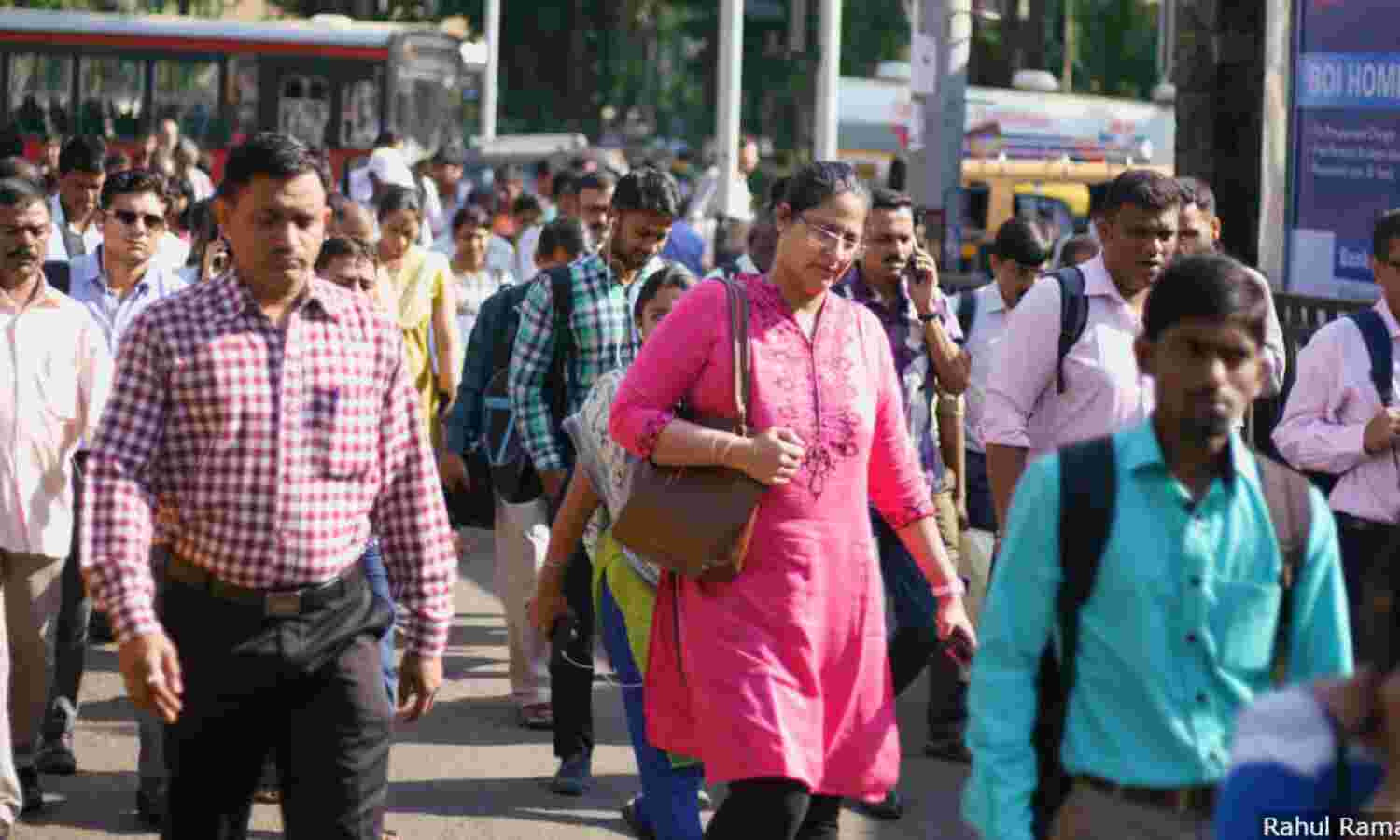Jobs Data Reveal Highest Urban Unemployment, But More Formal Jobs

New Delhi: The latest jobs data released by the government--amidst much controversy and debate--showed a 45-year high in general unemployment, but these data have also revealed a rise in formal employment--which accounts for 35.8% of all jobs--particularly in urban, non-farm sectors.
Our findings came from a comparison we ran of the Periodic Labour Force Survey (PLFS), released by the National Sample Survey Office (NSSO) on May 31, 2019, and the quinquennial Employment and Unemployment Survey of NSSO, 2004-05:
- The share of “regular” workers in urban areas increased over 13 years, from 35.6% in 2004-05 to 47% in 2017-18.
- The share of workers in the “formal” non-agriculture sector--government organisations, public sector enterprises, and public/private limited companies, trust/non-profit institutions and autonomous bodies--increased from 27.8% in 2004-05 to 35.8% in 2017-18.
A contradiction is also evident in the data on “decent employment”--a term used by the International Labour Organisation and by the Indian government to analyse employment conditions.
The employment rate for those with a job contract and paid leave in non-farm, urban jobs fell over the period we considered. However, jobs for those with social security benefits, the most important measurement of such employment, rose during the last 13 years.
Consequently, a new dualism in the urban job market is emerging: a growth in relatively secure formal employment having two sets of workers, one with better employment condition or decent jobs, and another with poor employment conditions almost similar to informal employment.
This is a broad analysis of India’s employment conditions, which require a detailed investigation, with the caveat that there are limitations in comparing PLFS 2017-18 and previous NSSO surveys. The PLFS measures employment every three months in urban areas and once a year in both rural and urban areas, and uses education levels as a criterion for classification.
Given that PLFS 2017-18 was conducted after the implementation of the Goods and Services Tax (GST) in July 2017, the data show that the proportion of formal workers has increased since then. The share of “regular” workers in urban areas increased over 13 years, from 35.6% in 2004-05 to 47% in 2017-18.
Regular employment for men rose from 40.6% to 45.7% and for women from 35.6% to 52.1% this period. Although the GST was widely criticised for its hasty, often chaotic implementation (read our series on job losses following demonetisation and implementation of the GST here).
The PLFS report showed that India’s unemployment rate was 6.1%, when calculated by “usual status” (which is determined on the basis of a reference period of one year preceding the date of survey), and 8.9% when calculated by the “current weekly status” (which is determined on the basis of a reference period of seven days preceding the date of survey)--both during the first term of Prime Minister Narendra Modi.
The report also showed that joblessness was highest among urban female youth (27.2%); urban, educated Indians--men (9.2%) and women (19.8%)--and among women in general (10.8%).
Other data sources appear to back the finding that formal, non-farm employment has risen. These include monthly payroll data released by the Employees’ Provident Fund Organisation (EPFO), Employees’ State Insurance Corporation (ESIC) and the Pension Fund Regulatory and Development Authority (PFRDA).
Why ‘decent employment’ is important
“Decent employment” is a key government ambition, in line with the sustainable development goals (SDGs) of the United Nations. Goal number eight says: “Promote sustained, inclusive and sustainable economic growth, full and productive employment and decent work for all.”
For the two (written jobs contract, and paid leave) of three indicators for ‘decent employment’, there has been a decline in urban, non-farm employment, a closer look at the data reveals, but by the third indicator (social security benefits) shows an uptick and that, as we explain, is more significant.
The first indicator for decent employment in non-farm, urban sectors is a written job contract or a formal agreement with the employer about the duration of the job. By this yardstick, the latest PLFS report shows that the share of regular workers (with a written job contract) in urban areas declined from 40.9% in 2004-05 to 27.6% in 2017-18, and 38.8% to 28.6% for women.
The PLFS report shows that the share of regular workers eligible for paid leave--the second indicator for “decent employment”--declined in urban areas from 54.5% in 2004-05 to 47.2% in 2017-18, and 52.0% to 48.2% for women.
The third and most important indicator for decent employment conditions is the share of regular workers eligible for social security benefits--provident fund, pension, gratuity, health care, and maternity benefits--which, however, has increased by 6.2 percentage points from 46.6% in 2004-05 to 52.3% in 2017-18, and 40.4% to 49.9% for women .
The PLFS 2017-18 thus confirms that there has been a decline in the number of regular workers having a written contract and getting paid leaves. Yet, the silver lining is the increase in the number of formal workers in urban areas receiving social security benefits as a result of continued government efforts over the last 13 years.
(Kumar and Mehta are PhDs in economics and development economics, respectively, and are associated with the Impact and Policy Research Institute (IMPRI), New Delhi and Institute for Human Development, Delhi)
We welcome feedback. Please write to respond@indiaspend.org. We reserve the right to edit responses for language and grammar.


